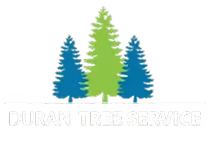Tree Trimming vs. Tree Pruning: The Key Differences, Benefits, and When to Use Each

Understanding what is the difference between tree trimming and pruning is essential for maintaining healthy trees, beautiful trees on your property. While these terms are often used interchangeably, they serve distinct purposes and require different approaches. Both practices are crucial for proper care of trees and shrubs. Knowing when and how to use each method makes the difference between healthy, thriving trees and damaged ones. Without proper care, trees may decline and eventually need costly removal.
What Is Tree Trimming and Pruning?
Tree trimming is mainly an aesthetic practice. It focuses on maintaining the shape, size, and overall visual appeal of trees and shrubs. This landscaping technique removes overgrown branches to create a neat, well-maintained look. It also helps control the overall size of trees and plants.
Top Reasons for Tree Trimming Care
Shape and Symmetry Maintenance
Trimming helps trees and plant maintain a balanced, attractive form that enhances your property’s curb appeal. By removing excess growth, you can preserve the natural silhouette of your trees while preventing them from becoming unruly or misshapen.
Improved Light Penetration
Overgrown trees and plants can create excessive shade that blocks sunlight from reaching your lawn, garden, or home. Strategic tree trimming opens up the canopy, allowing more light to filter through and reach the areas below.
Property Protection
Regular trimming prevents branches from interfering with structures, power lines, walkways, and vehicles. This proactive approach reduces the risk of property damage from overhanging or low-hanging branches.
Enhanced Growth Control
Tree pruning and trimming services encourages the remaining foliage to grow thicker and more vibrant. By removing competing branches, trees can allocate their resources more effectively to healthy growth areas.
Three Trimming Methods for Trees Tools
Canopy Lifting
This method involves removing lower branches to provide clearance for pedestrians, vehicles, or structures while maintaining the tree’s natural shape.
Size Management
Regular trimming to control height and spread, particularly important for fast-growing species or trees in confined spaces.
Aesthetic Shaping
Selective removal of branches to enhance the tree’s natural form and create visual balance in the landscape.
What Is Tree Pruning?
Proper tree pruning is a health-focused practice that involves the strategic removal of diseased branches, damaged, dead, or structurally unsound branches. Unlike trimming, pruning is primarily concerned with improving overall tree health, safety, and longevity rather than appearance alone.
Core Benefits of Tree Pruning
Disease Prevention and Control
Ttree trimming removes infected branches before diseases can spread throughout the tree. This preventive differences between pruning protects against fungi, bacteria, and pests that could compromise the entire tree’s health.
Structural Integrity Enhancement
By eliminating weak, crossing, or competing branches, pruning strengthens the tree’s overall structure. This reduces the risk of branch failure during storms or heavy weather conditions.
Enhanced Air Circulation
Strategic branch removal improves airflow through the canopy and lowers humidity. This helps prevent fungal growth and creates a healthier environment for the tree.
Increased Fruit and Flower Production
For fruit trees and flowering species, proper pruning redirects energy into producing better blooms and harvests by removing unproductive growth. This not only boosts yield but also keeps trees healthy.
Three Pruning Methods for Trees
Crown Cleaning
The most fundamental pruning services method involves removing dead, dying, diseased, and broken branches. This basic maintenance prevents decay from spreading and eliminates potential safety hazards.
Crown Thinning
This technique selectively removes interior branches to reduce canopy density while maintaining the tree’s natural shape. Crown thinning allows more light and air to reach inner branches without altering the tree’s overall size.
Crown Raising
This tree trimming services removes lower branches to provide vertical clearance for pedestrians, vehicles, or structures. Crown raising should be done gradually over time to minimize stress on the tree.
Best Times for Tree Pruning
Late Winter to Early Spring
The dormant season is ideal for most tree species because trees are less susceptible to stress, pests, and diseases. Without leaves, the tree’s structure is clearly visible, making it easier to identify problem areas.
Species-Specific Timing
Spring-flowering trees should be pruned immediately after blooming to avoid removing next year’s flower buds. Summer-flowering trees are best pruned during dormancy to encourage vigorous spring growth.
Emergency Situations
Damaged, diseased, or hazardous branches should be removed immediately, regardless of the season, to prevent further damage.
Key Differences: Tree Trimming vs Tree Pruning
The fundamental distinction between trimming and pruning lies in their primary objectives and methods. While both involve cutting branches, their purposes, timing, and techniques differ significantly.
Purpose and Focus
Trimming prioritizes aesthetic appeal and growth control, while pruning emphasizes health and structural integrity. Trimming maintains appearances, whereas pruning addresses underlying tree health issues.
Frequency
Trees usually need trimming one to two times a year to maintain their shape. Pruning is done annually or as needed, depending on the tree’s health and species.
Tools and Techniques
Tree doctors use hedge trimmers and hand shears for lighter trimming cuts. Pruning, however, requires specialized tools like pruning saws and loppers for removing larger branches.
Seasonal Considerations
Trimming is best done during the active growing seasons of spring and summer. Pruning, however, is usually done during dormancy to reduce stress and lower the risk of disease.
Branch Selection
Trimming focuses on overgrown and excess branches, while pruning targets specific problem areas like diseased, damaged, or structurally weak branches.
Risks of Incorrect Tree Pruning
Improper pruning practices can cause significant and sometimes irreversible damage to trees. Understanding these risks helps highlight why professional expertise is often necessary for proper tree care.
Structural Weakness
Incorrect cuts can create weak points in the tree’s framework, making it more susceptible to breakage during storms. Poor pruning can remove too much of the canopy, affecting the tree’s ability to photosynthesize and maintain strength.
Disease and Pest Vulnerability
Improper cutting techniques can create entry points for pathogens and insects. Flush cuts or stub cuts that damage the branch collar prevent proper wound healing and invite infection.
Reduced Tree Vigor
Over-pruning or inappropriate timing can stress trees beyond their ability to recover. Removing too much foliage reduces the tree’s energy production capacity, potentially leading to decline or death.
Abnormal Growth Patterns
Poor pruning can lead to water sprouts and suckers. These weaken the tree’s structure and take away from its appearance.
Economic Consequences
Damaged trees may require tree removal or corrective treatment. The cost of fixing improper pruning often exceeds the investment in professional care from the beginning.
DIY vs Professional Tree Services Arborist
The decision between DIY tree care and professional tree pruning services depends on several critical factors that affect both outcomes and safety.
Safety Considerations
Tree work involves significant physical risks, including falls from heights, equipment injuries, and electrical hazards near power lines. Professional arborists have specialized training, safety equipment, and insurance coverage to manage these risks effectively.
Technical Expertise Required
Proper tree care requires understanding of tree biology, species-specific needs, and cutting techniques. Certified arborists possess knowledge of tree physiology, disease identification, and appropriate timing for different species.
By learning the difference between tree pruning and tree trimming, property owners can make smart choices for their landscape. Knowing when to call in professional help keeps plants and shrubs healthy while protecting their investment.
Equipment Requirements
Professional tree care requires specialized equipment that most homeowners don’t possess, including professional-grade chainsaws, climbing gear, and safety equipment. The cost of purchasing quality tools often exceeds the expense of hiring professionals.
When to Hire Professionals
Always choose professional services for large trees, trees near buildings or power lines, and trees that are diseased. Call a professional any time safety is a concern. Certified arborists can assess tree health, identify problems, treat diseased branches, and provide a complete care plan.
Appropriate DIY Tasks
Homeowners can safely handle light trimming of small shrubs and young trees, along with basic tasks like mulching and watering. They can also watch for signs of problems that may need professional attention.
Long-term Value
ISA-certified arborists bring specialized knowledge, proper equipment, and sustainable tree care services. They also carry insurance, ensuring your trees get the right care while protecting your property, tree health, and safety. Investing in professional tree care pays off in many ways. It improves tree health, extends their lifespan, and reduces the risk of property damage or personal injury.
By understanding the differences between trimming and pruning, property owners can make better decisions for their trees. Knowing when to call a professional helps protect both the trees and the investment in the landscape.

